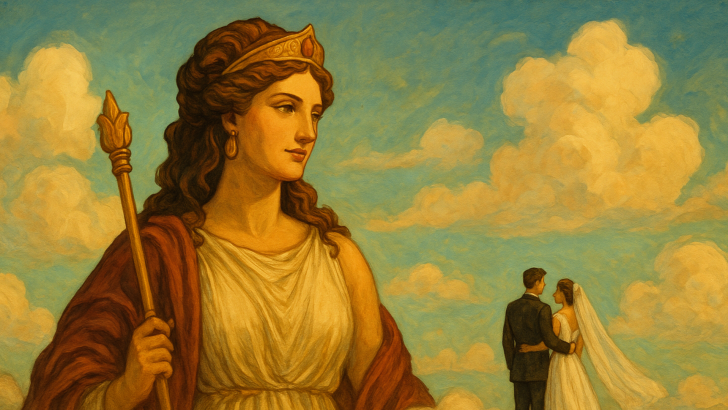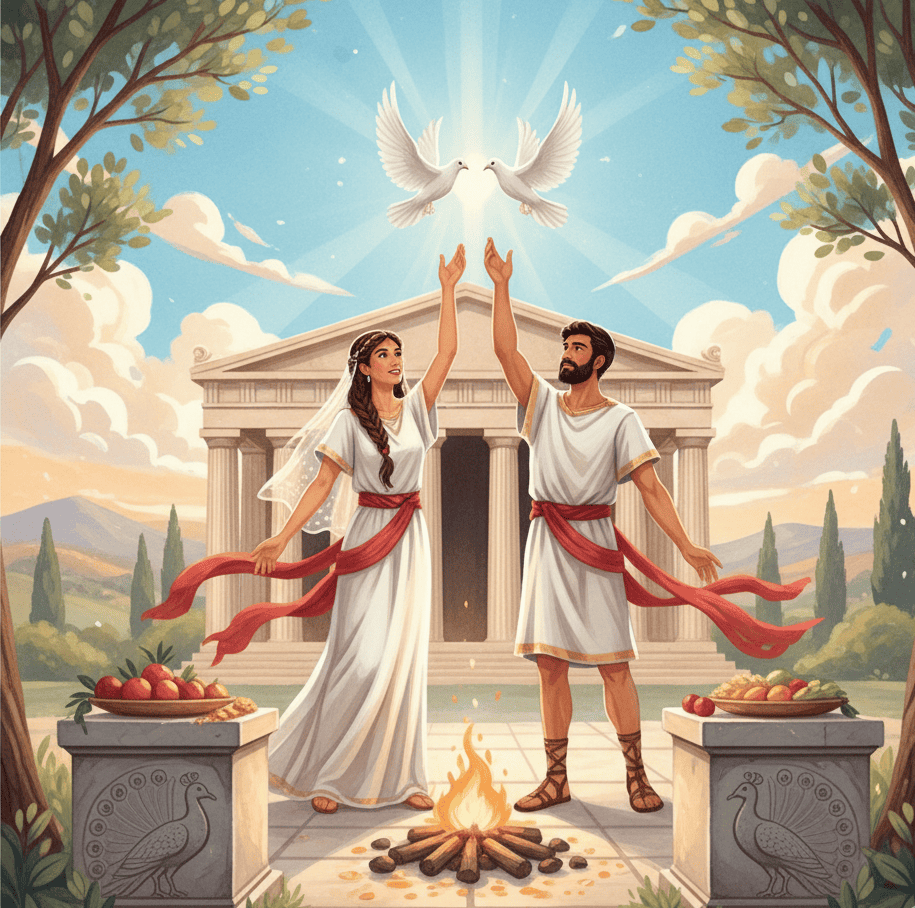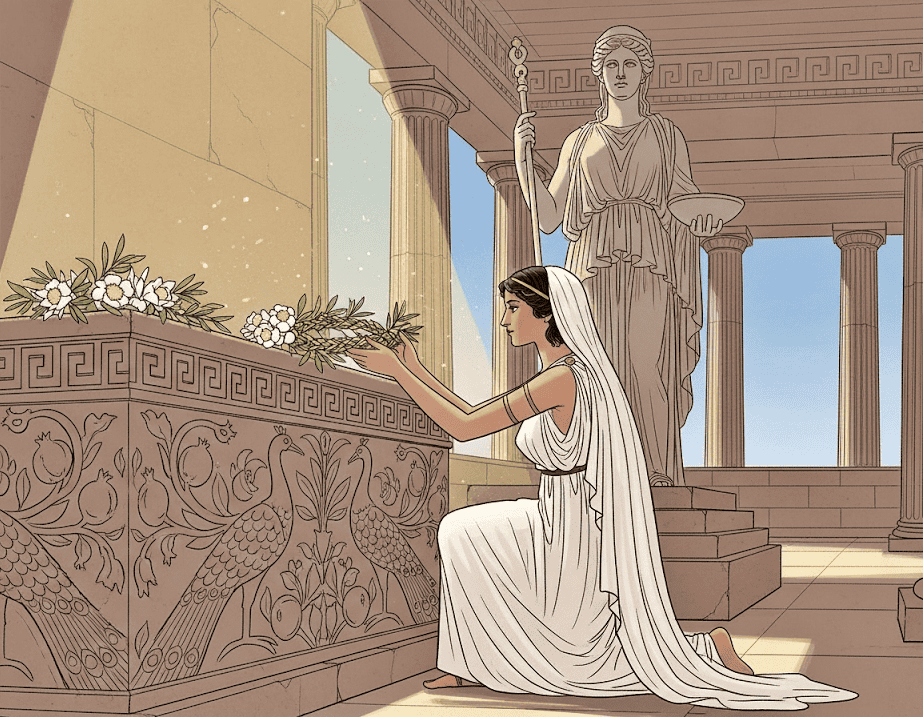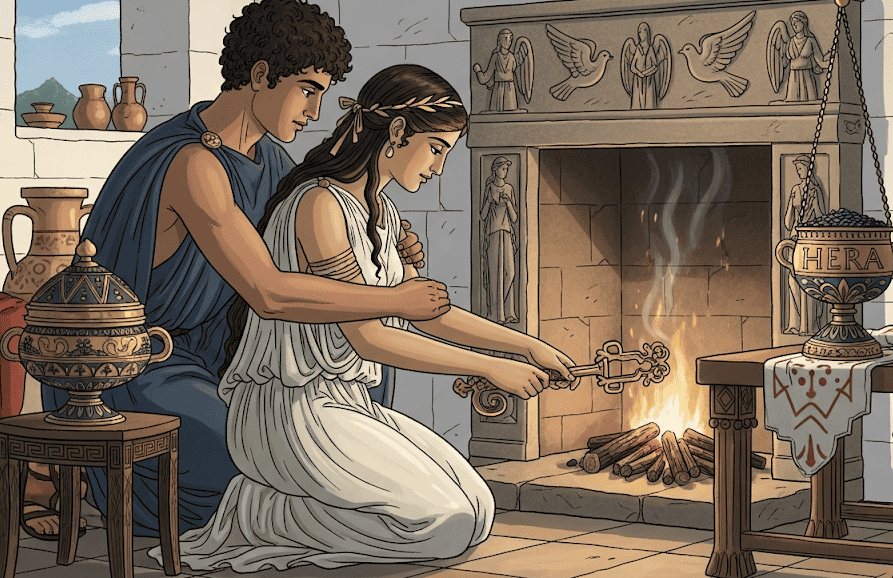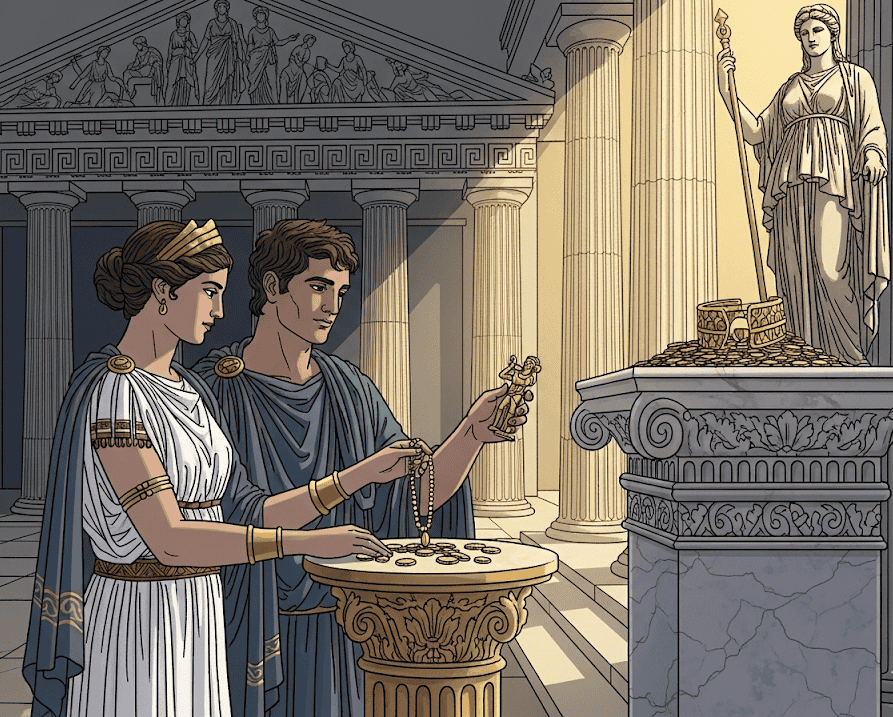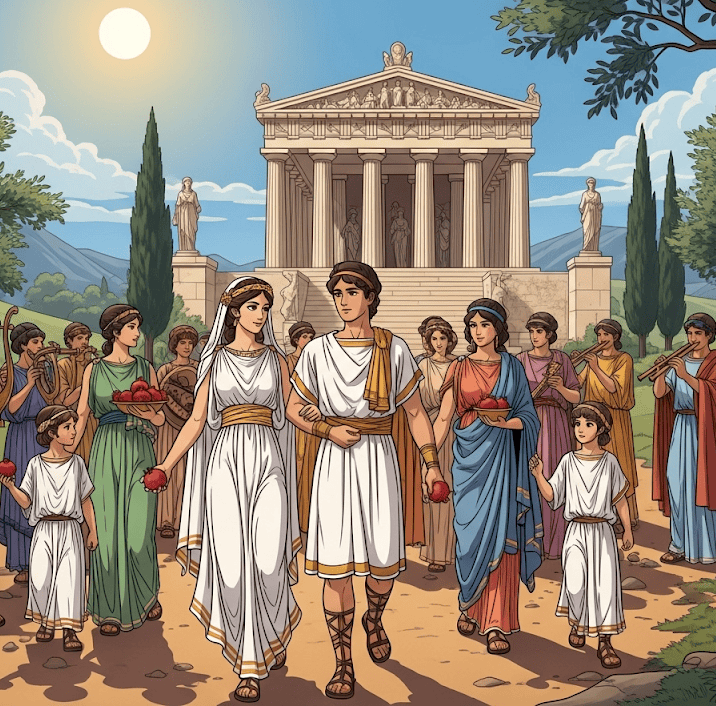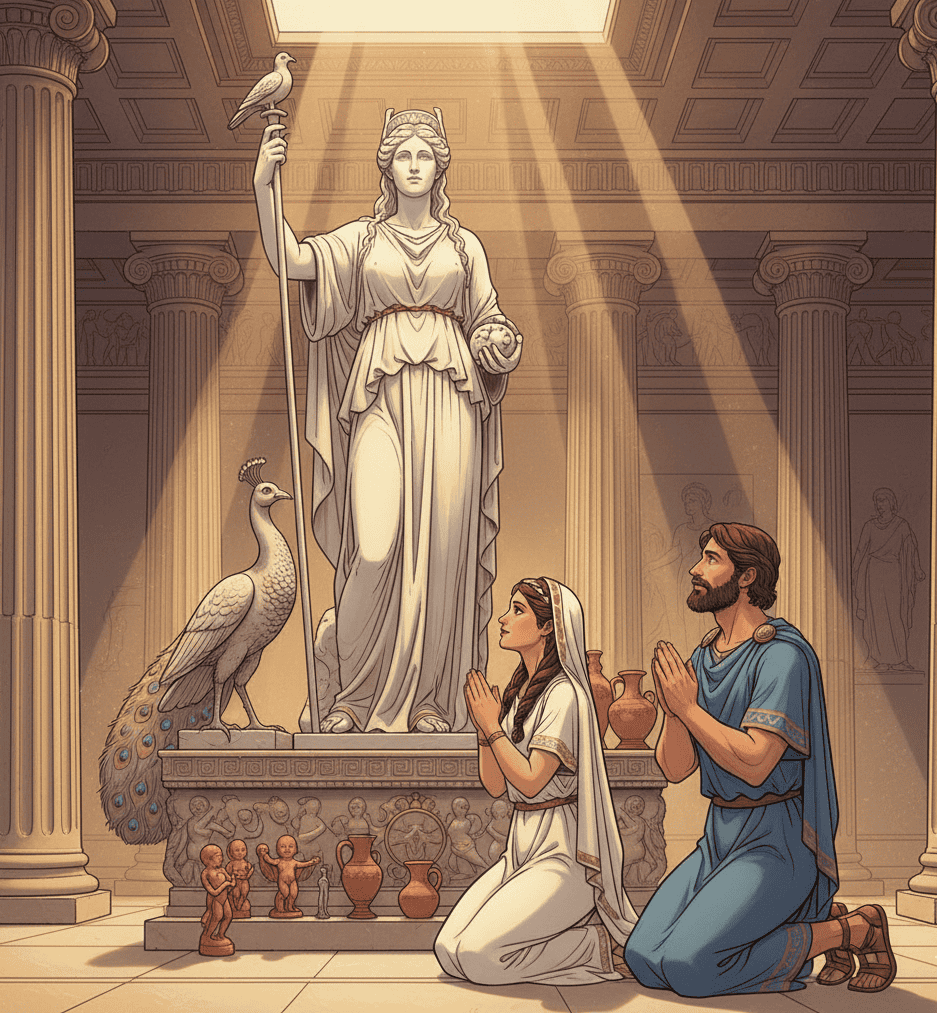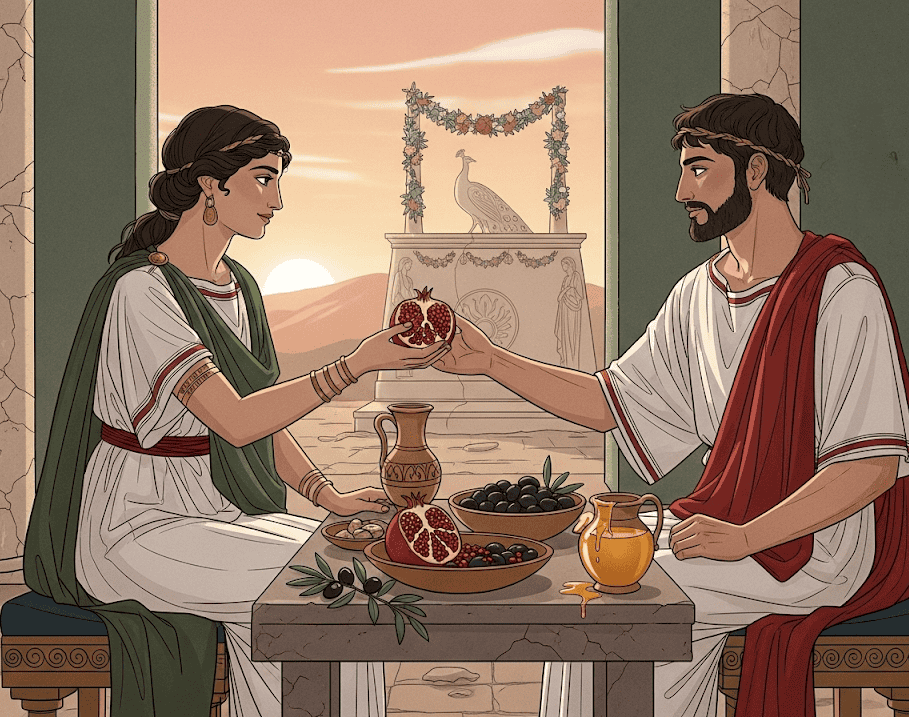Hera, queen of the gods in Greek mythology, was not only a powerful figure but also the goddess of marriage and family.
Her influence over unions made her a central figure for couples seeking blessings, guidance, and protection in their married life.
Across ancient Greece, many rituals were performed in her honor, blending devotion, symbolism, and the desire to ensure love endured.
These ceremonies were not only practical expressions of faith but also cultural ways to honor commitment, celebrate partnership, and invite divine favor.
Let’s explore seven fascinating marriage rituals dedicated to Hera that reveal how deeply the Greeks intertwined love, devotion, and mythology.
1. The Sacrifice of Doves
Doves were sacred to Hera, representing fidelity and devotion. During marriage ceremonies, couples would often release a pair of doves as a symbol of their commitment.
In some cases, the birds were given to the temple to be cared for by priests, representing the couple’s promise to nurture their union.
The ritual emphasized loyalty and the delicate care needed to maintain a strong bond.
Watching the doves fly together was a visual metaphor for the couple’s journey, suggesting that love, like the birds, needed freedom, attention, and mutual respect.
2. The Bridal Crown Offering
Brides preparing for their wedding would sometimes present a crown or garland to Hera as part of a blessing ritual.
Made of fragrant flowers and olive branches, the crown symbolized purity, prosperity, and protection.
It was often placed upon the altar or offered during a prayer at a temple dedicated to the goddess.
This simple act connected the bride to the divine, suggesting that her beauty, virtue, and future happiness were under Hera’s watchful eye.
Wearing a symbolic crown during rituals reminded couples that marriage was both a sacred partnership and a shared responsibility.
3. Lighting of the Hearth
Hera was closely associated with the home and family, and one of the most significant rituals involved the lighting of a sacred hearth fire.
Newlyweds would kindle a fire together in her honor, symbolizing the warmth, safety, and continuity of their home.
The fire represented life’s energy and the couple’s shared effort to maintain harmony.
In some regions, embers from Hera’s temple were carried to the bride’s new home, ensuring the goddess’s blessing followed them.
The ritual highlighted that marriage was not just about love or passion but about building a stable, nurturing life together.
4. Offerings of Gold and Jewelry
Couples often gave offerings of gold, jewelry, or coins to Hera before or during the wedding.
These gifts were more than tokens; they symbolized commitment, generosity, and the willingness to invest in one another.
Some families presented the offerings as a sign of gratitude for Hera’s protection, while others did so to request her favor.
The act of giving reinforced the idea that a successful marriage required thoughtfulness and shared responsibility.
Beauty and wealth were intertwined with divine blessing, showing that prosperity and harmony went hand in hand in ancient rituals.
5. The Procession to the Temple
In many Greek cities, couples would lead a procession to Hera’s temple, accompanied by friends, family, and musicians.
This journey was both literal and symbolic, representing the transition from single life to married partnership.
Singing, dancing, and carrying symbolic objects like olive branches or pomegranates infused the ritual with joy, celebration, and spiritual significance.
The procession emphasized that marriage was a communal event, blessed not only by the gods but witnessed and supported by the community.
It reflected the belief that love and commitment were strengthened when shared and acknowledged publicly.
6. Prayers for Fertility and Longevity
Hera’s role as a protector of the family made her central to rituals requesting fertility, children, and a long-lasting union.
Couples would kneel before her statue, reciting prayers and sometimes offering small figurines of infants or miniature representations of households.
These prayers were not only for offspring but also for harmony, emotional resilience, and the ability to nurture one another.
Rituals included invoking Hera’s protection over the home and family life, asking for guidance in times of difficulty, and recognizing the importance of mutual support.
The act of praying together reinforced the spiritual bond between husband and wife, reminding them that marriage was a lifelong journey with challenges to be faced together.
7. The Sacred Meal Sharing
After rituals and temple offerings, couples often participated in a sacred meal in honor of Hera. This meal included symbolic foods such as pomegranates, grapes, olives, and honey.
Sharing food was a gesture of unity, intimacy, and trust, echoing the goddess’s role in sustaining and nurturing marriages.
Each bite served as a reminder that marriage required collaboration, patience, and care.
In some traditions, portions of the meal were offered to the gods before the couple ate, further connecting the act of nourishment to divine blessing.
By breaking bread together, the couple acknowledged that their love and partnership were grounded in everyday gestures, respect, and shared experiences.

Ho sempre sentito una forte connessione con il Divino fin dalla mia nascita. Come autrice e mentore, la mia missione è aiutare gli altri a trovare l'amore, la felicità e la forza interiore nei momenti più bui.

